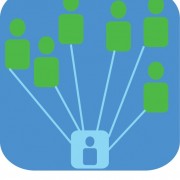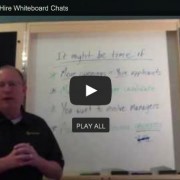Avoid HR Headaches with these 25 Tips
The expectations business leaders place upon their human resource departments are increasing. Years ago, the role of HR centered around filing employee paperwork, navigating benefits, and a range of activities meant to avoid compliance fines and lawsuits. Of course, human resource professionals came into their roles with a higher calling: cultivating the company’s human capital, its employees.
The times have caught up with the nobler side of human resources. Even the most profit-focused executive understands the high cost of low retention. And much of the business sector embraces concepts like culture and employer brand after witnessing the tech industry wield them successfully. As a result, business leaders expect much more from their human resource professionals.
Throw in COVID and the ever-increasing labyrinth of laws and regulations, and any HR professional may start measuring their dedication in aspirin. But you needn’t suffer migraines to chase your HR calling. We’ve identified 5 common causes of HR headaches and compiled a list of 25 HR tips to avoid these issues.
Eliminate Workplace Discrimination, Promote Diversity
- Elevate your training beyond a blurb in the handbook. Create a comprehensive anti-discrimination training plan using how-to videos and assessments to ensure understanding.
- Create additional, in-depth training programs for managers. When a potential HR discrimination issue arises, it will likely be brought to the attention of one of your managers first. Make sure they know how to handle discrimination situations to avoid making the company vulnerable to further legal action.
- Address the anti-discrimination HR issues unique to remote workers. Virtual meetings are a fact of work life, whether employees are in the office or at home. Likewise, in the absence of physical proximity, employees rely on email and other forms of communications more often than ever. Make sure your anti-discrimination policies take into consideration the increasingly virtual nature of work.
- Avoid claims of hiring discrimination by using applicant tracking software (ATS) to thoroughly log hiring decisions. Keeping an electronic record of interviews, impressions and the reasons behind your hiring decision will protect you in the event of legal action resulting from a hiring decision.
- Create a diversity plan in your hiring process. Remove excessive educational or other onerous job requirements. Advertise your job openings to marginalized groups.
Avoid Wage and Hour HR Issues
- Take advantage of the training modules in your onboarding software to educate workers about expectations regarding working during off hours. Clarify that they are not allowed to work beyond their scheduled hours without approval, and tell them to approach HR if they feel their manager is pressuring them to perform unpaid work during their off-hours.
- Know the wage and hour laws in each state where remote workers or contractors reside. For example, California updated its employment laws regarding the classification of independent contractors. Even one remote worker in a state may make your company liable for franchise taxes or a different standard of workers’ compensation insurance.
- Require employees to sign-off on any changes to their time worked or their paycheck. Sometimes payroll mistakes will happen. When they do, provide documentation explaining the error and require the employee to sign it before corrections are implemented.
- When hiring, the role should be clearly designated as being exempt or nonexempt. Be consistent with your job descriptions and training for jobs. Utilize your ATS and onboarding software to help keep track of the details. Don’t recreate the wheel every time the chair is empty.
- Classify bonuses correctly for nonexempt employees. The overtime rate for your nonexempt employees is “one and one-half times the regular rate at which they are employed.” When you give nonexempt employees bonuses, that bonus amount most likely needs to be calculated into their “regular rate” for overtime calculation.
Avoid HR issues and Turnover by being Proactive
- Use your onboarding software to create employee training plans for each position. Rather than relying on the same onboarding process for every new hire, tailor your onboarding plan for each position. Include training modules as well as peer training.
- Create a career development plan for employees. 65% of employees expect their employers to provide resources for continued learning. You can increase engagement and reduce turnover by supporting your employees’ career development goals.
- Create a mentorship program. Pair current leaders with your star employees to form a mentorship program. Upskilling your current workforce is less costly and more effective than hiring new employees. Current employees who show potential but lack training already understand the company, its culture and its mission.
- Consider sponsoring employees for paid certifications and workshops.
- Avoid a one-size-fits-all approach by conducting a performance analysis to pinpoint the source of performance issues. Employee surveys, accident reports, customer feedback and other tools can help you determine if the problem is specific to an employee, a manager or the entire team. They can also help you uncover company-wide inefficiencies that contribute to performance issues.
Avoid Employee Conflict
- Encourage inter-departmental communication early. During your onboarding process, assign new hires to work in different departments for a day. They’ll learn how their role affects the company, and they’ll form working relationships with their colleagues.
- Respect personality differences and adjust for employee strengths. Often, a perceived weakness is masking a corresponding strength. An introvert struggling in a team setting may excel if given the opportunity to work independently. Use personality tests and strength-based assessments to ensure everyone can thrive in their role.
- Foster team relationships with company-sponsored events. Whether it’s a company-wide baseball game or a smaller outing to a comedy club with the team, give employees a chance to get to know their colleagues beyond their work role.
- Incorporate relationship-building and social needs into your onboarding process. Get new hires off to a great start by encouraging workplace friendships. Ask your new hire to write a short biography, including information such as hobbies or pets. Post this biography in a prominent place on the company intranet. Assign a peer buddy to each new hire to help them learn the company’s culture and unwritten rules, and schedule lunches with team members.
- Reexamine your incentive and rewards program. Make sure to revise employee incentives that may encourage too much competition and create conflict.
Improve Your HR Recruitment Results
- Use an ATS to automate repetitive tasks such as posting to multiple job sites, texting candidates and tracking progress. By doing so, you’ll have more time for creating a strategy that improves your hiring process.
- Harness the power of data. Your ATS can tell you important information, such as your time-to-hire ratio, drop off rate, how long it takes applicants to complete an application and more. You can use your ATS to find out where you can make improvements in your process.
- Implement an employee referral program. Employee referrals result in more new hires than any other method. And they tend to stay with the company longer.
- Use a team approach to make better hiring decisions and avoid unconscious bias.
- Make it easy to attract top talent by developing your employer brand.
Take the Headache Out of Human Resources
The causes behind the most common HR issues are increasingly complex. Discrimination, once confined to the office, can now happen across great distances. And greater social awareness is bringing a wider range of claims to the courts. Wage and hour laws, always notoriously complex, can be downright perplexing when it comes to remote workers.
Training has become a key expectation from top talent. Employee conflict, which affects your productivity and culture, is even more damaging in the tight post-Covid labor market. There are a lot of factors that support the current labor shortage and the Great Resignation phenomenon we are experiencing. Unfortunately, neither are going to change in the near term.
Without a doubt, a career in human resources can be a wild ride. On the one hand, you’ve got a pile of new laws and regulations to decipher and an executive team demanding more metrics. On the other hand, you get to help people reach their potential and assist them when they need support along their work journey. If you want to reclaim part of your workday and throw away your aspirin bottle, I suggest you work with companies that are truly interested in partnering with you and your success versus just selling you software.
If you are ready for real help from real people, check out our applicant tracking system and onboarding software. Contact us today to find out more.
Photo by Vinicius “amnx” Amano on Unsplash









